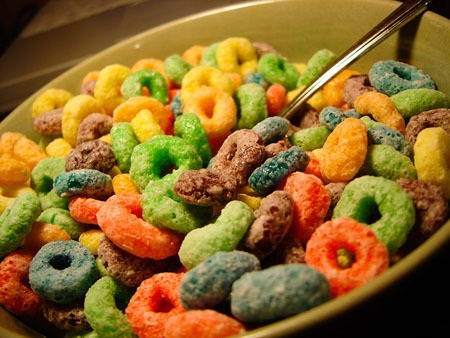Earth Talk Q & A Column:
Is it true that much of our food—including cereals and snacks eaten by children—is actually over-fortified with excessive amounts of vitamins and minerals that can be dangerous to our health?
– Diane Summerton,
Added nutrients in the processed foods we eat could indeed be too much of a good thing, especially for kids. According to a report from non-profit health research and advocacy group Environmental Working Group (EWG), nearly half of American kids aged eight and under “consume potentially harmful amounts of vitamin A, zinc and niacin because of excessive food fortification, outdated nutritional labeling rules and misleading marketing tactics used by food manufacturers.” EWG’s analysis for the “How Much Is Too Much?” report focused on two frequently fortified food categories: breakfast cereals and snack bars.
Of the 1,550 common cereals studied by EWG, 114 (including Total Raisin Bran, Wheaties Fuel, Cocoa Krispies, Krave and others) were fortified with 30 percent or more of the adult Daily Value for vitamin A, zinc and/or niacin. And 27 of 1,000 brands of snack bars studied (including Balance, Kind and
“Heavily fortified foods may sound like a good thing, but it when it comes to children and pregnant women, excessive exposure to high nutrient levels could actually cause short or long-term health problems,” says EWG research director Renee Sharp, who co-authored the report. “Manufacturers use vitamin and mineral fortification to sell their products, adding amounts in excess of what people need and more than might be prudent for young children to consume.”
Sharp adds that excessive levels of vitamin A can lead to skeletal abnormalities, liver damage and hair loss, while high doses of zinc can impede copper absorption, compromise red and white blood cells and impair immune function. Also, too much vitamin A during pregnancy can lead to fetal developmental issues. And older adults who get too much vitamin A are at more risk for osteoporosis and hip fractures.
EWG suggests it’s time to overhaul our food labeling system to better account for how ingredients may affect children as well as adults. “In other words, when a parent picks up a box of cereal and sees that one serving provides 50 percent of the Daily Value for vitamin A, he or she may think that it provides 50 percent of a child’s recommended intake,” says EWG researcher and report co-author Olga Naidenko. “But he or she would most likely be wrong, since the Daily Values are based on an adult’s dietary needs.”
EWG is working on the U.S. Food and Drug Administration (FDA) to update its guidelines for Nutrition Facts to better reflect how foods affect children as well as adults. In the meantime, parents might want to consider scaling back on fortified foods for their kids in favor of so-called whole foods (unprocessed, unrefined fruits, vegetables and whole grains) that deliver the right amounts of nutrients naturally.
“Research consistently shows that the nutrient amounts and types found in whole foods provide optimal nutrition as well as least risk,” says Ashley Koff, a registered dietitian and a former ad executive for kid’s cereals and snack bars. “We owe it to parents and kids to make it easiest to choose better quality foods.”
CONTACT: EWG’s “How Much Is Too Much?” report, www.ewg.org/research/how-much-is-too-much.
EarthTalk® is written and edited by Roddy Scheer and Doug Moss and is a registered trademark of E – The Environmental Magazine (www.emagazine.com). Send questions to: earthtalk@emagazine.com
{jathumbnail off}








